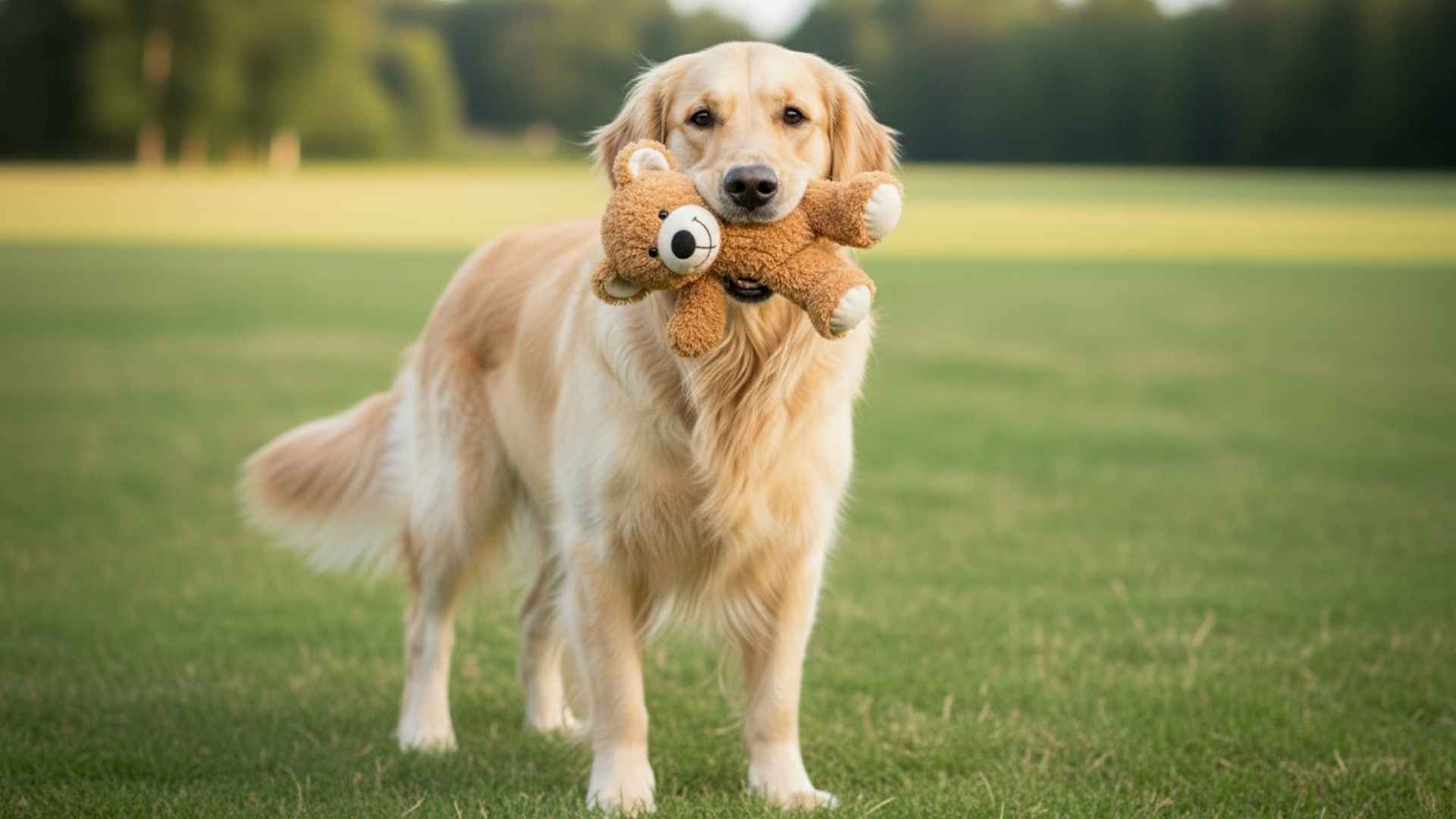Some dogs show affection in the sweetest and quirkiest ways—like carrying their favorite toys everywhere as if they were their own puppies. These breeds often display nurturing instincts, treating stuffed animals and plush companions with surprising tenderness.
This behavior isn’t just adorable—it’s rooted in instinct and emotional intelligence. Certain breeds, especially those historically bred for retrieving or herding, have a natural drive to carry and protect.
For others, it’s a comforting ritual that brings them security and joy, similar to a child holding onto a beloved blanket or doll. These dogs may gently mouth their toys, carry them from room to room, or even “tuck” them into bed beside them.
In this article, we’ll explore dog breeds that carry toys around like baby puppies—the caring canines whose playful yet maternal instincts melt hearts everywhere. From retrievers to toy breeds, these loving dogs remind us that compassion isn’t just a human trait—it’s deeply canine too.
Dog Breeds That Carry Toys Around Like Baby Puppies
1. Golden Retriever
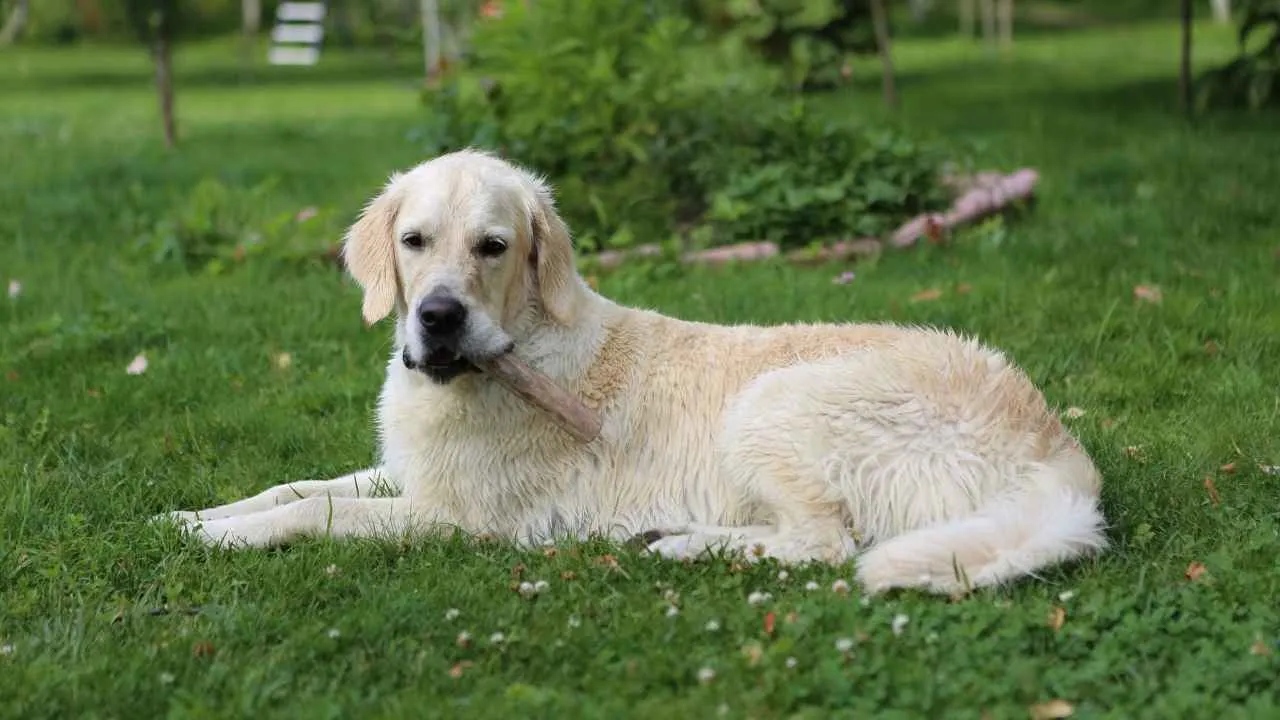
The Golden Retriever, affectionately known as the “Golden”, is one of the most recognizable and beloved breeds in the world.
According to the American Kennel Club, the Golden Retriever is an energetic and elegant Scottish gundog that ranks among the most popular dog breeds in the United States.
With their friendly nature and eager-to-please attitude, Goldens have become synonymous with loyalty, warmth, and emotional intelligence.

Golden Retrievers have an instinct to carry objects softly in their mouths—an ability inherited from their retrieving heritage. This natural tendency often extends to toys, which they lovingly tote around as if caring for their own puppies.
They show remarkable gentleness when doing so, rarely damaging their favorite plush companions.
Their empathetic temperament makes them one of the most nurturing breeds, often seeking comfort in their toys or offering them to their humans as gifts. This endearing behavior reflects their deep social bonds and emotional sensitivity.
Fact: Golden Retrievers are part of the Sporting Group (AKC) and were originally bred to retrieve waterfowl—developing the “soft mouth” trait that makes them so gentle when carrying toys or even small animals.
2. Labrador Retriever

The Labrador Retriever, affectionately known as the Lab, is one of the most popular and versatile dog breeds worldwide. According to PetMD, the Labrador Retriever is among the most popular dog breeds in the United States, and for good reason.
Originating from the United Kingdom with roots in Newfoundland, this breed is celebrated for its intelligence, friendliness, and loyalty. Labs are known for their athletic build and sleek double coat in shades of black, yellow, or chocolate.

Labradors have an endearing habit of carrying toys around—often gently holding plushies or balls in their mouths as if they were puppies. This sweet behavior stems from their natural retrieving instincts and nurturing nature.
Their gentle mouths, developed for fetching game without damage, make them prone to treating toys with a kind of protective tenderness.
This behavior isn’t just instinct—it’s emotional. Labs are affectionate companions who find comfort and joy in having something soft to hold. Whether they’re strolling through the house or waiting patiently for their humans, their toy “babies” often act as emotional anchors.
Fact: Recognized by the AKC in 1917, the Labrador Retriever remains one of the most popular family dogs in the U.S., loved for its playful yet gentle temperament and strong retrieving instincts.
3. Border Collie
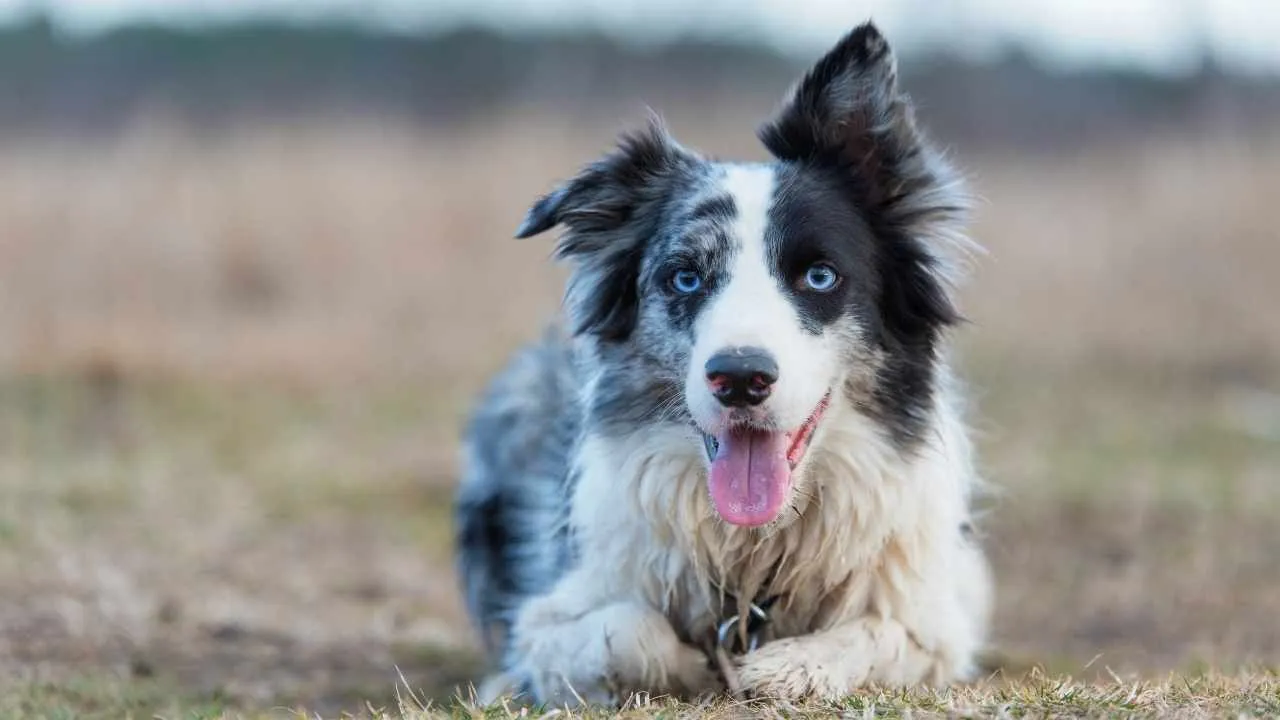
The Border Collie, often called the “workaholic of the dog world,” originated in the borderlands of England and Scotland. According to WebMD, Border Collies are energetic and lively herding dogs known for their high activity levels and enthusiasm.
Renowned for their unmatched intelligence and focus, these dogs were bred for herding sheep with precision and control. With a sleek coat—either smooth or rough—and an alert stance, they embody both elegance and energy.

Their instinct to herd translates into nurturing behaviors, which is why some Border Collies gently carry toys around as though they were caring for fragile pups. This display of tenderness often stems from their deep-rooted working drive and need to protect and organize.
They find comfort and satisfaction in “looking after” their belongings, showcasing a mix of diligence and affection.
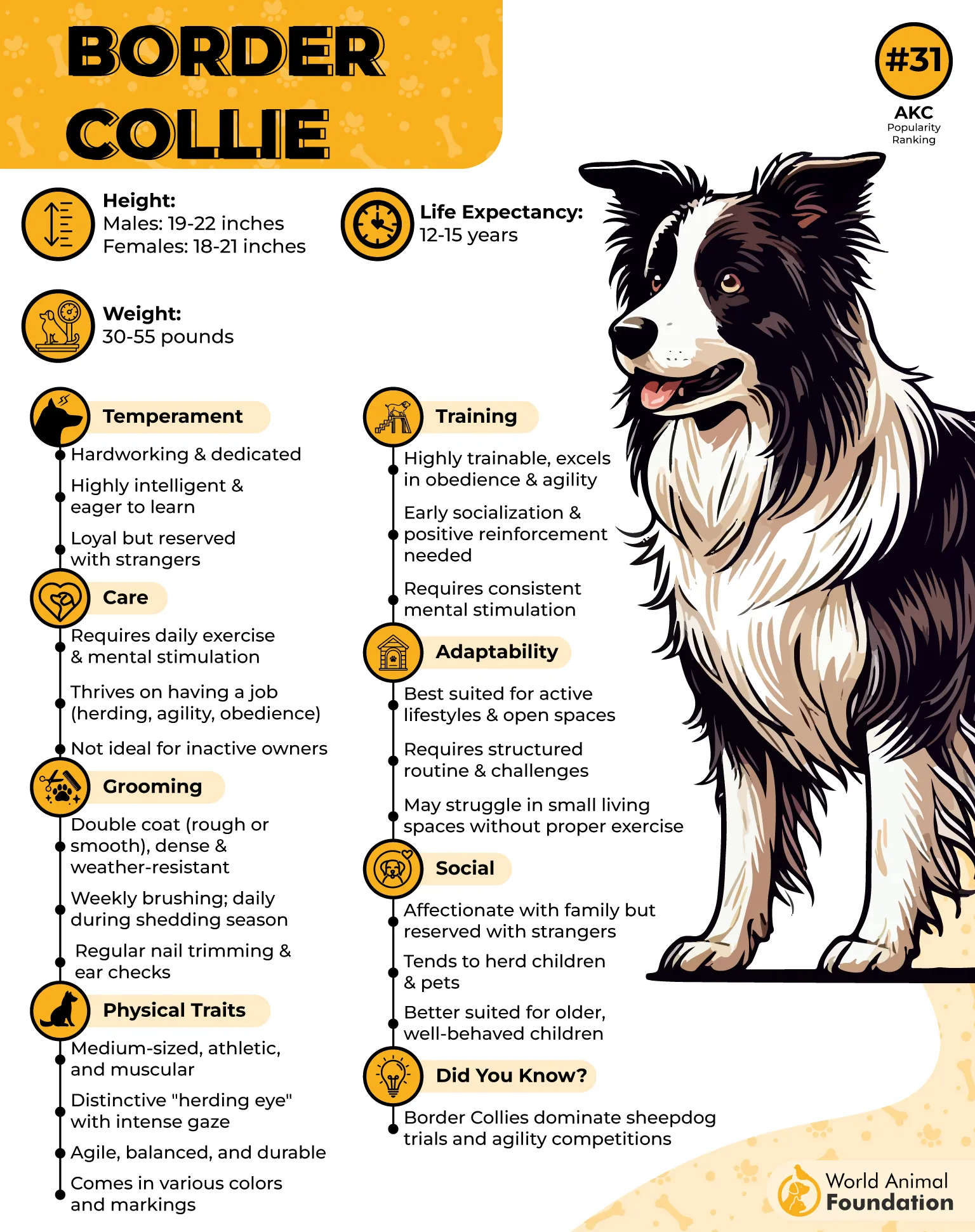
A Border Collie’s sensitivity and emotional depth also contribute to this endearing trait. They bond intensely with their owners and extend that care to their toys, treating them as part of their pack. Their expressive eyes and deliberate movements often seem almost human in their thoughtfulness.
Fact: The Border Collie’s herding instinct is actually a softened form of the wolf’s hunting drive—refined over centuries to gather, not kill, making them both sharp-minded and compassionate guardians.
4. Pomeranian
Also known as the Pom or Dwarf Spitz, the Pomeranian is a tiny yet bold member of the Spitz family, hailing from Poland and Germany.
This fluffy companion boasts a luxurious double coat and a fox-like face that perfectly complements its confident stance. Despite its delicate size, the Pom’s energy and enthusiasm are boundless.
These spirited dogs often treat their favorite plush toys as cherished companions, carrying them from room to room as if protecting a beloved pup.
Their nurturing instincts, combined with their alert personalities, make them both tender and tenacious—never afraid to show affection or defend their “babies.”
Pomeranians thrive on companionship and comfort. When left alone, many find solace in their toys, snuggling or grooming them to self-soothe. This behavior reflects their deep emotional intelligence and strong need for closeness.
Fact: Pomeranians are descendants of large Arctic sled dogs and were famously adored by Queen Victoria, who bred them into the smaller, charming toy dogs we know today.
5. Beagle
The Beagle, often called the “merry hound,” is one of the most cheerful and affectionate breeds. With its pleading eyes, floppy ears, and joyful demeanor, the Beagle easily charms anyone it meets—humans and dogs alike.
Beagles tend to form strong attachments not only to their families but also to their toys. Their instinct to carry items in their mouths stems from their history as hunters and retrievers.
Many Beagles treat their favorite plush toys as prized treasures, gently carrying them around or curling up beside them as if protecting something precious.
This nurturing behavior is both instinctive and endearing. It reflects their deep emotional intelligence and their need for comfort and connection. A Beagle might parade its toy proudly through the house or softly whine if it’s misplaced, showing how much sentimental value they attach to their “companions.”
Fact: Beagles are among the most vocal dog breeds, using their signature “bay” or howl not just to track prey, but sometimes to announce the discovery of a missing toy.
6. Shetland Sheepdog
The Shetland Sheepdog, fondly called the Sheltie, hails from the rugged Shetland Islands of the UK. Compact, agile, and coated in a beautiful double layer of fur, these dogs resemble smaller Rough Collies.
Known for their keen intelligence and alert expression, Shelties are both affectionate companions and natural guardians of their homes.
These bright dogs often form deep emotional bonds with their toys, sometimes carrying them from room to room as if they were precious pups.
Their nurturing nature, inherited from centuries of herding instincts, makes them unusually gentle with objects they cherish. Providing soft plush toys can encourage this caring behavior and comfort them when alone.
Play is also a learning moment for Shelties—they love to “herd” their toys into piles or present them proudly to family members. Because they’re highly sensitive, gentle praise and calm play sessions help build trust and confidence.
Fact: Despite their small size, Shelties rank among the most intelligent breeds—often competing successfully in obedience and agility competitions.
7. Jack Russell Terrier
The Jack Russell Terrier, sometimes called the Parson Russell Terrier, is a small but fearless dog with roots in 19th-century England.
Originally bred for fox hunting, this energetic terrier combines intelligence, determination, and a spark of mischief that makes it unforgettable. It’s a compact powerhouse with a big personality.
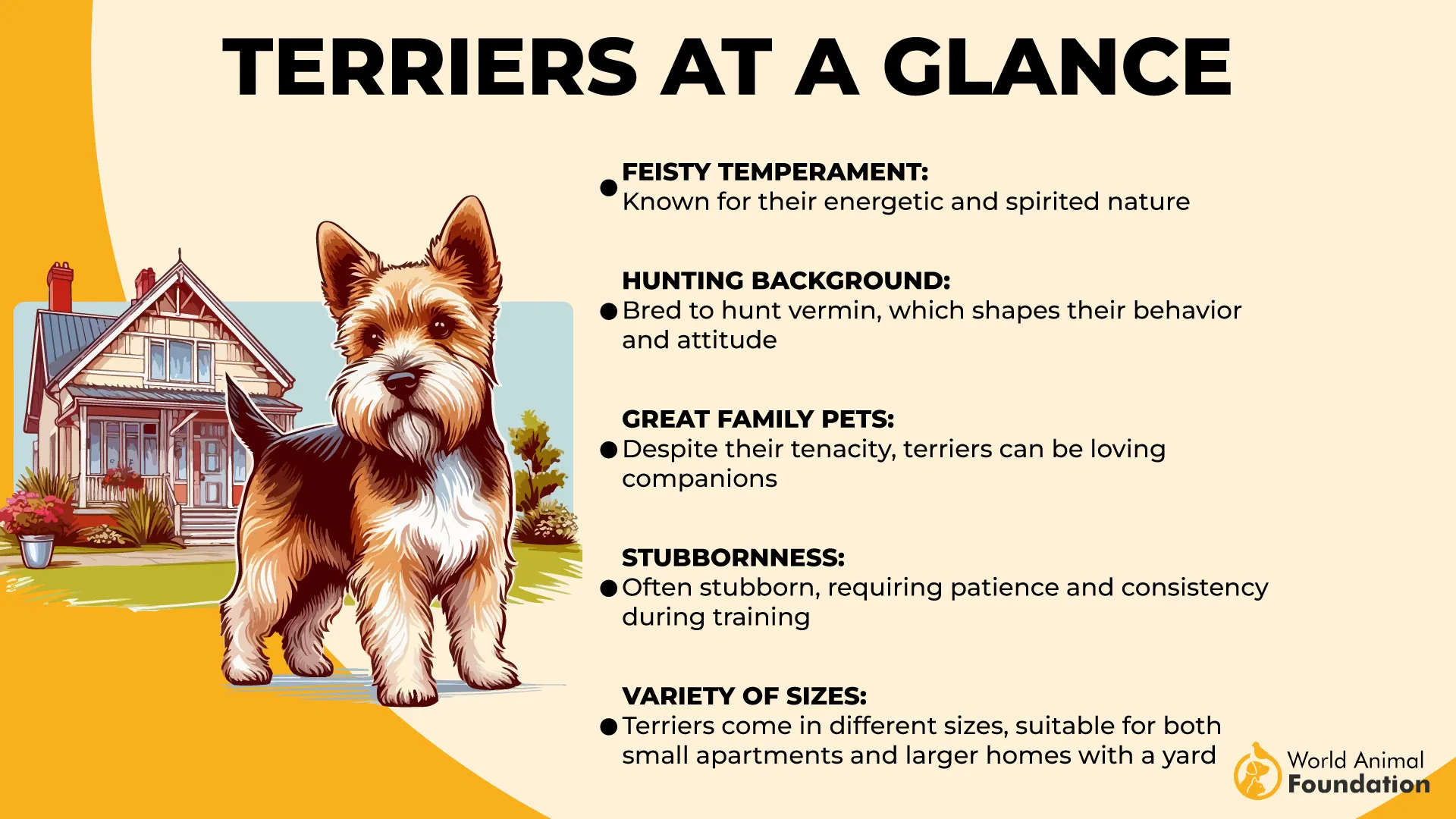
Jack Russells often carry toys as if they’re precious treasures—or even their “puppies.” This behavior reflects their high intelligence and intense prey drive, redirecting their instinct to chase and guard into playful, nurturing habits. You’ll often find them parading their favorite plush around the house with great pride.
Their possessiveness can stem from affection rather than aggression. These dogs form deep emotional attachments and see their toys as part of their pack. That same loyalty translates into their relationships with their families—they love fiercely and protect what’s theirs.
Fact: Despite their small stature, Jack Russell Terriers can jump up to 5 feet high and need about 90 minutes of vigorous daily exercise to stay happy and balanced.
8. Poodle
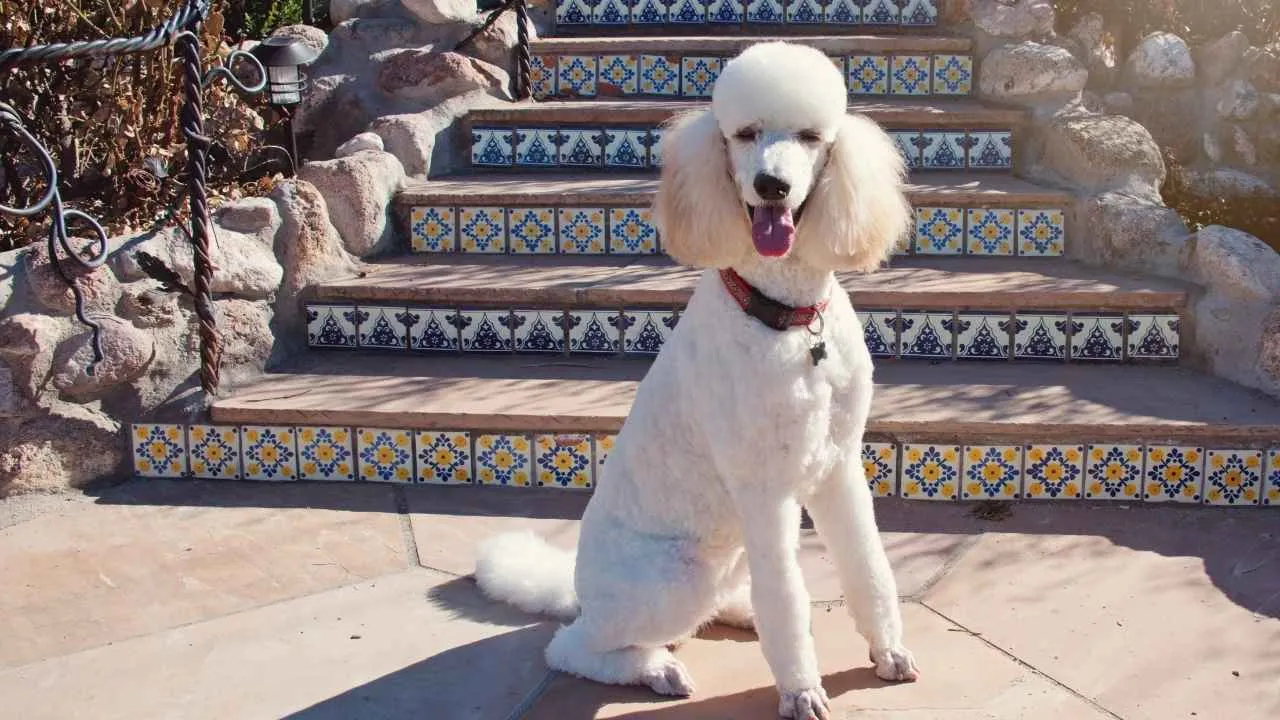
The Poodle, often called the “canine aristocrat,” comes in three sizes—Standard, Miniature, and Toy—but all share the same intelligence, elegance, and charm.
With their signature curly coats and alert expressions, Poodles are not just stylish companions; they’re also among the most emotionally intuitive dogs around.
Known for their sensitivity and empathy, Poodles often express affection in unique ways—like gently carrying their favorite plush toys as if they were their own pups. This behavior reflects their nurturing instinct and deep emotional connection with the world around them.
Their high intelligence allows them to understand emotional cues, often comforting their owners or tending to their toys with surprising tenderness.
Their playfulness adds to their charm—they can turn any quiet moment into an adorable display of affection, trotting proudly with a toy in their mouth as if showing off their “baby.”
Poodles’ strong family bonds make them especially likely to attach meaning to their possessions, blending play and care seamlessly.
Fact: The Poodle originated in Germany but was perfected in France, where it became a symbol of sophistication and intelligence, admired both as a performer and a devoted companion.
9. Boxer
The Boxer, sometimes affectionately called the “Peter Pan of dogs,” hails from Germany and belongs to the working group.
Known for its athletic physique and expressive face, this breed balances power with playfulness. Despite its muscular build and strong heritage as a working and guard dog, the Boxer’s heart is all about love, fun, and loyalty.
When it comes to toys, Boxers show a childlike devotion—often carrying their favorites around as if they were treasured pups of their own. This gentle behavior contrasts with their boisterous energy, revealing a surprisingly tender and emotional side beneath all that muscle.
Their tendency to guard and nurture their toys speaks to their sensitive and loyal nature. Boxers form deep attachments to their humans and objects alike, treating both with affection and care. Their expressive eyes and goofy antics make them both protective companions and endless sources of joy.
Fact: The Boxer’s name may come from the German word boxl or from their unique play style—standing on hind legs and “boxing” with their front paws during play.
10. Australian Shepherd
The Australian Shepherd, affectionately called the Aussie, may trace its name to Australia, but its true origins lie in the ranches of the United States.
This medium-sized, energetic breed was developed to herd livestock across vast terrains, combining intelligence, agility, and boundless enthusiasm. Recognizable by its striking blue merle or red merle coat, the Aussie stands out for its lively spirit and sharp instincts.
When it comes to emotional expression, Aussies are among the most affectionate herding breeds. Many display a touching habit—carrying toys gently in their mouths as though they were caring for their own pups.
This nurturing behavior reflects their strong herding and protective instincts, turning everyday play into an act of tenderness.
Carrying toys also provides comfort and connection, especially when their owners are away. For these loyal dogs, a beloved plush or ball often becomes a stand-in companion—a small symbol of love and security. Their sensitivity and intelligence allow them to form profound emotional bonds through such gestures.
Fact: Despite their name, Australian Shepherds were bred in the U.S. to work with Basque shepherds and are celebrated for their stamina, loyalty, and unwavering devotion to their families.
Conclusion
Dogs that carry toys around like baby puppies show just how nurturing and emotionally intelligent our furry friends can be.
Whether they’re gently holding a stuffed animal in their mouth or proudly parading their favorite squeaky toy through the household, these behaviors often stem from affection, mental stimulation, and comfort.
Breeds like Golden Retrievers or Border Collies may do this out of instinct, while smaller, cuter companions enjoy the security their toys bring—especially when left alone for long periods.
No matter the breed, this sweet behavior reflects the emotional depth that makes dogs such special members of our families. From playful pups who wag their tail while sitting on the couch to nurturing souls who treat toys like kids, each dog brings its own personality and charm.
Across a variety of lifestyles, these loving pets show us that the way they live—and love—is what makes them so pretty unforgettable among other pets.


